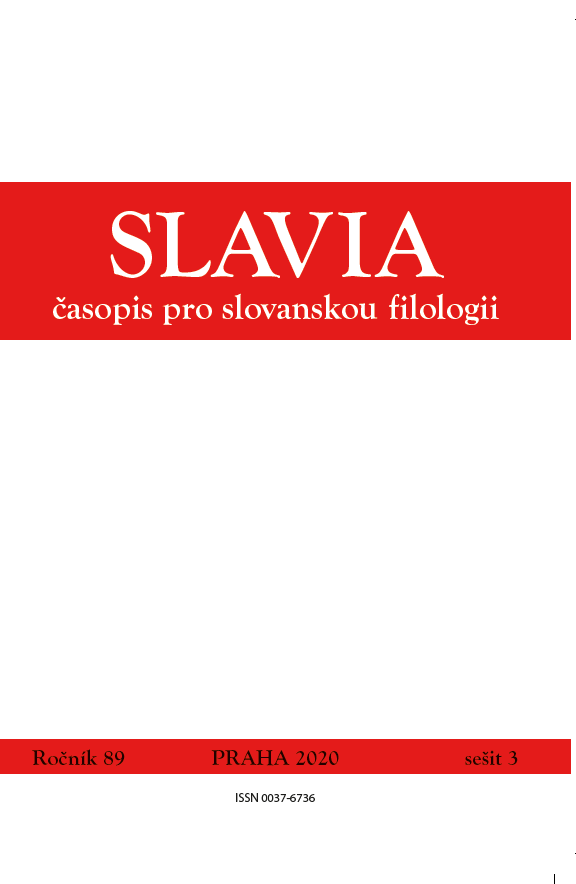Typologické aspekty ruského a českého vidového systému
Russian and Czech Aspect System from a Typological Point of View
Author(s): Ondřej BláhaSubject(s): Comparative Linguistics, Western Slavic Languages, Eastern Slavic Languages
Published by: AV ČR - Akademie věd České republiky - Slovanský ústav and Euroslavica
Keywords: Russian language; Czech language; language typology; verb; aspect; tense; modality; preterite; repetitive verbal actions; imperative;
Summary/Abstract: The paper deals with typological context of the inventory and distribution of the aspectual forms in Russian and Czech. Analysis based on the 1,000 most frequent verbs in Russian and Czech journalistic texts and, partially, on the Russian and Czech National Corpora showed that the inventory of aspectual forms is more complete and symmetrical in Russian, compared to the Czech language. There are less aspectually unpaired verbs in Russian and the number of tokens of perfective and imperfective verbs related to the most frequent lemmas is more balanced in Russian. There is also a higher number of prefixed verbs in Russian than in Czech, and secondary imperfective verbs are more frequent in Russian. On the other hand, the distribution of aspectual forms is rather asymmetrical in Russian compared to Czech, especially in the preterite: this is caused by the different arrangement of the Russian aspect system on the one hand and Czech aspect system on the other hand (both in sense of S. M. Dickey’s thesis of western and eastern aspectual types). Besides the obligatory combination of both the semes of „totality“ and „temporal definiteness“, the close relation between the aspectual meaning and semantic features of certain verb (expressing e.g. the repetitive character of verbal action) is noticeable in Russian. There are marked differences also in the imperative when compared Russian to Czech. The author considers these facts predominantly as a manifestation of agglutinative tendency to the monofunctionality (non-synonymy) of word forms, which is stronger in Russian than in Czech and which has its parallels also in other levels of the Russian language structure.
Journal: Slavia - časopis pro slovanskou filologii
- Issue Year: LXXXIX/2020
- Issue No: 3
- Page Range: 245-255
- Page Count: 11
- Language: Czech
- Content File-PDF

